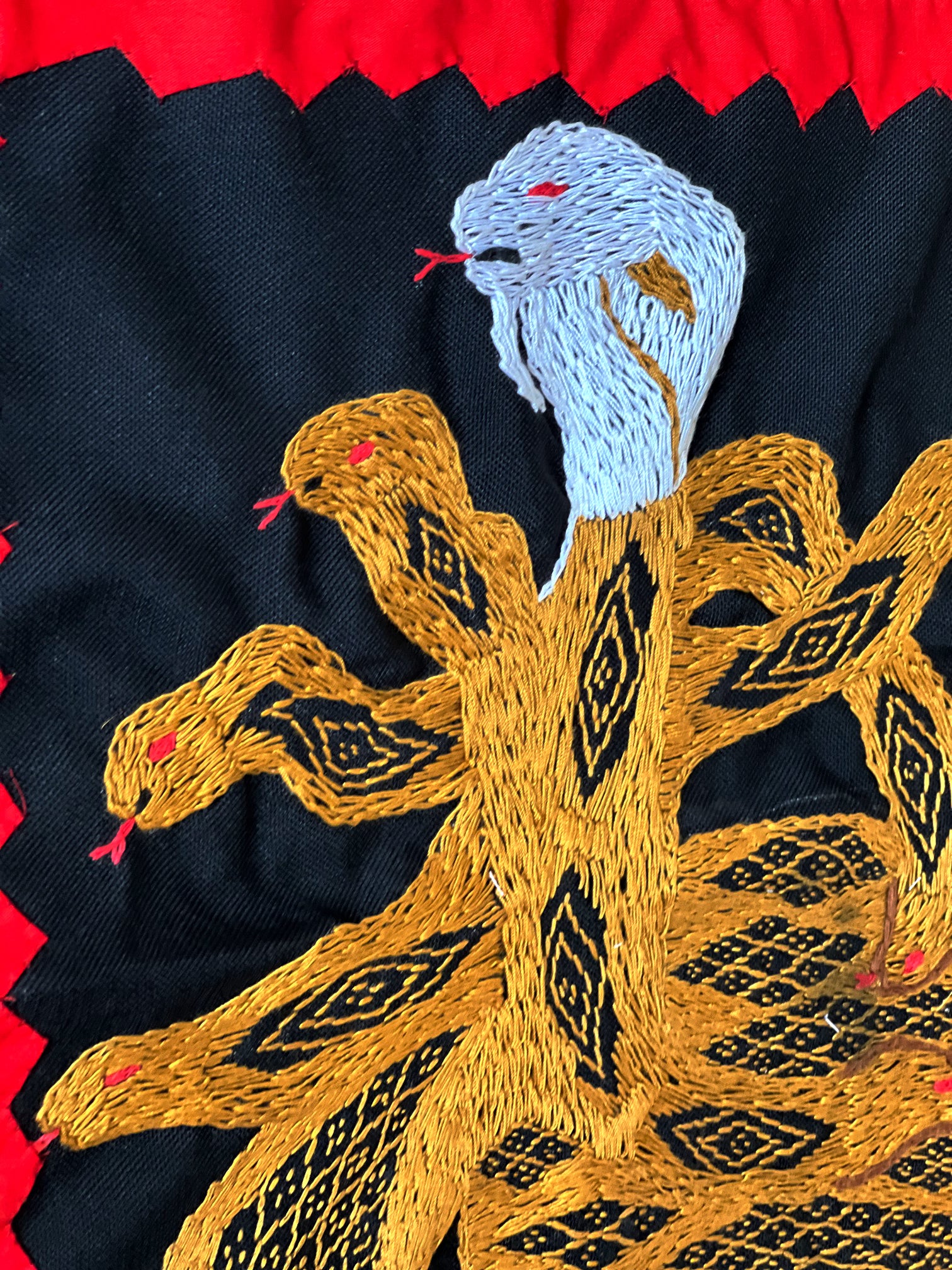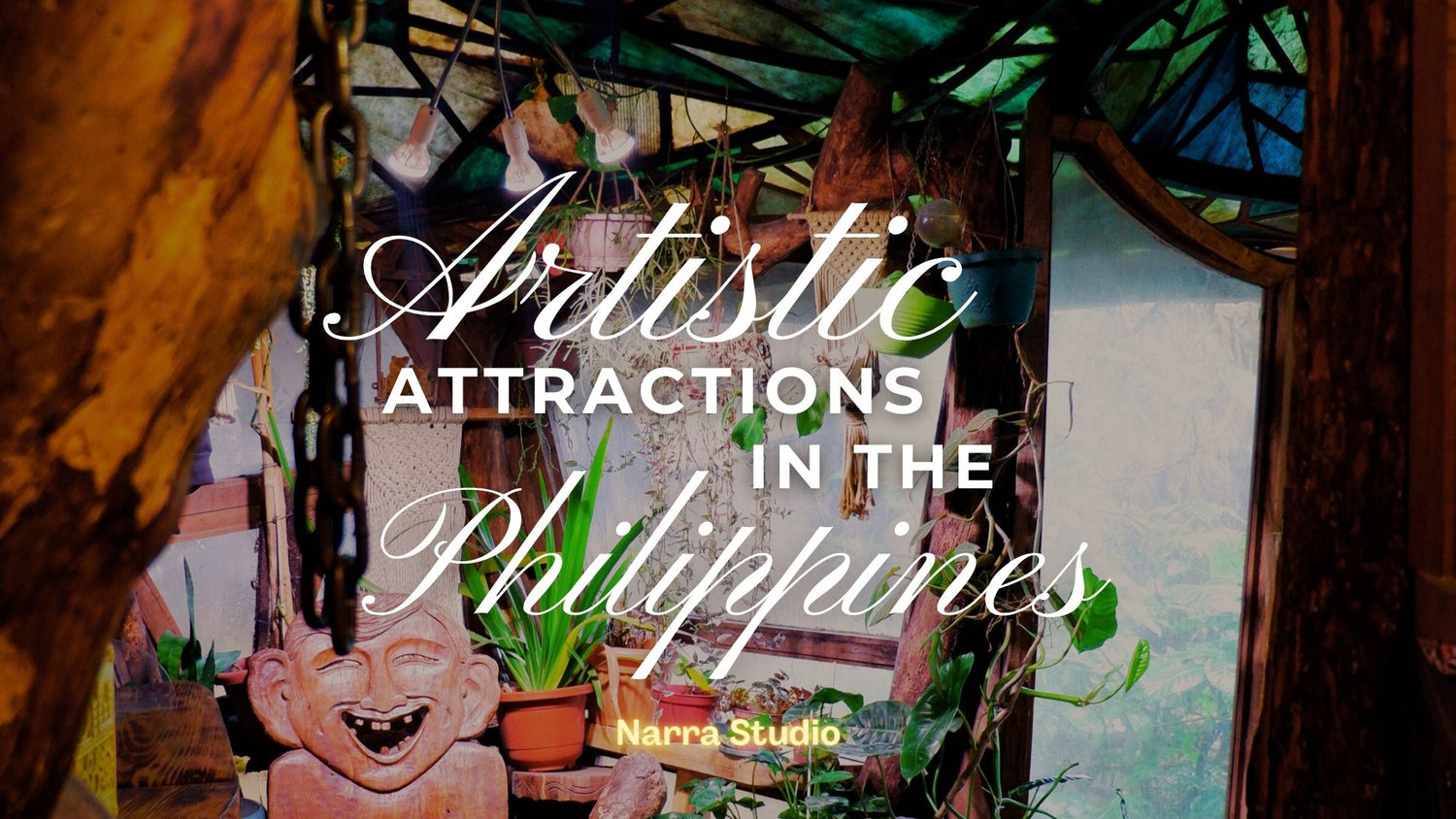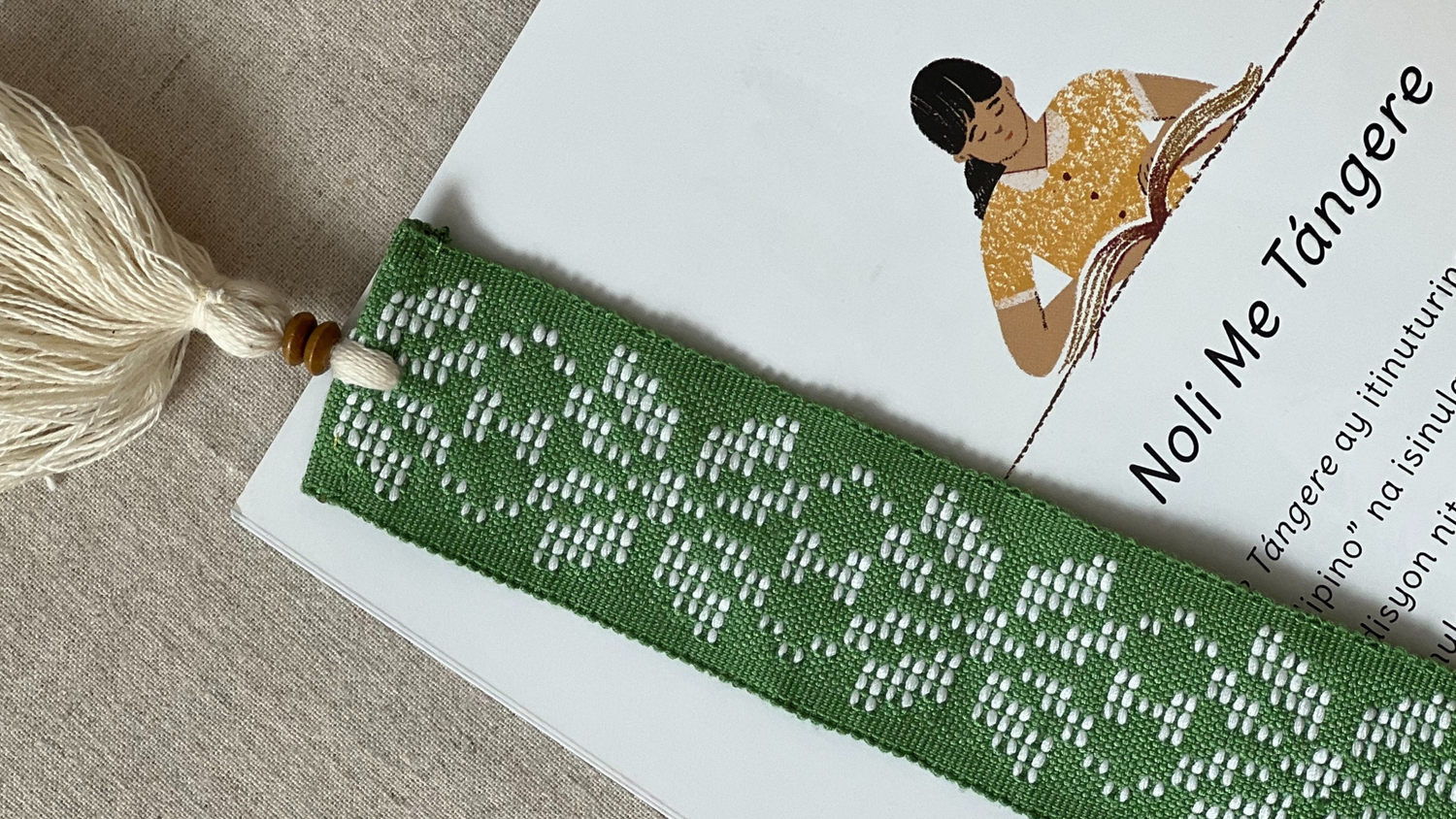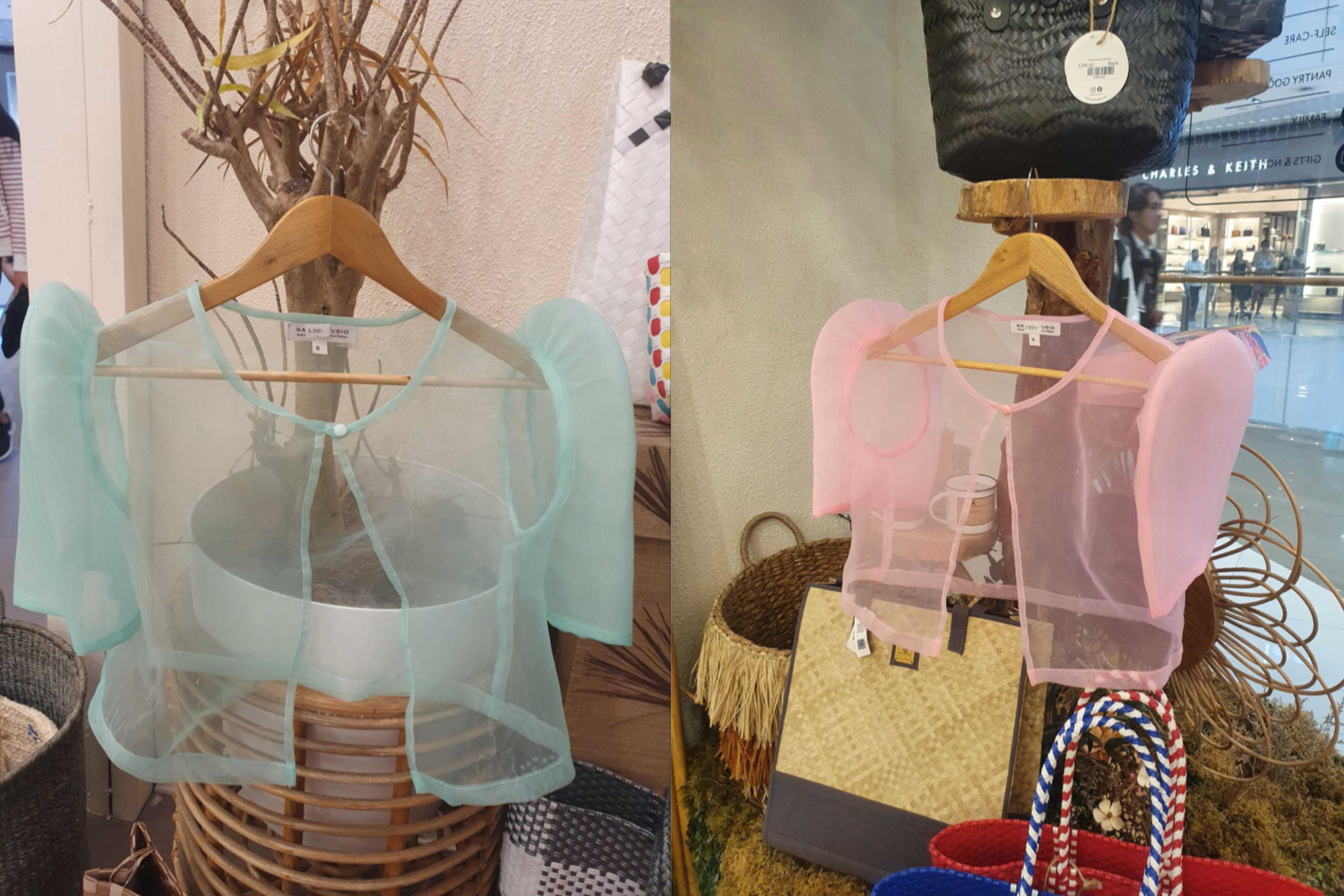By Mara Fabella
Residing along the mountainous regions of the island of Panay in Visayas are the Panay-Bukidnon, also known as the Suludnon. They comprise a diverse cultural group that live along the boundaries between the different provinces and cities of Panay, including Antique, Iloilo, Capiz, and Lambuano. For this reason, they are often called Sulod, a Visayan term meaning “inside,” or “to enter.” Tradition is central to the culture of the Sulod. They are known for their different art forms that celebrate the many aspects of their culture, such as dance, music, weaving, and most notably the traditional epics of the Visayans, passed on by the binokot, or the record-keeper.
Like many of their Visayan neighbors, the textiles of the Panay-Bukidnon bear striking geometric patterns. Where their textiles truly stands out is through their embroidery, known as panubok. The panubok is painstakingly created by the binokot, who, often forced to stay within their homes while the men worked outside, were trained in the practice and other domestic arts. Embroidery patterns can range from standard geometric designs, with zigzag and diamond shapes sewn with impressive accuracy, to radial floral patterns stitched in bright, eye-catching colors. Many of the garments embroidered by the binokot are colored red, which symbolizes bravery to the Sulod.
 Panay-Bukidnon Panubok Embroidery
Panay-Bukidnon Panubok Embroidery
What makes the panubok so central to the Suludnon is the way it serves as a form of cultural preservation, not just of the weaving arts, but of ancient Visayan lore as well. The many threaded symbols of the panubok bring to life the rich history of the Sugidanon, or the verbal epic chant. The chanting of the Sugidanon would play an important part of many rituals for the Sulod, from marriages, feasts, annual celebrations, or merely as entertainment. The Sugidanon was often chanted or sung by the elders, and many of the known epics have been passed down to only a few chanters today.
Among the many epics sung by the Sulod is that of Datu Paiburong, who unknowingly felled a tree that belong to the witch Makabagting. The witch then demanded the datu’s daughter’s as restitution for his actions. There are the tales of Matan-ayon, the beautiful wife of Labaw Dunggon. Her beauty so captivated deities and powerful men that they would often resort to magic and deception to draw her to them. In another tale, the Visayan goddess Alunsina convinces Humadapnon to plant a tree in the yard of the parents of Mali, the woman he loves, so he may see her when she visits to pick flowers off its branches. Many of the tales of the Sugidanon reflect the Sulod’s close ties with nature and family.
The Sugidanon is manifested in the panubok through embroidered symbols. These symbols, mostly of flora and different creatures, represent the Sulod’s ancient tales and connections with their environment as seen in the Sugidanon epics. Banog is the Cebuano term for “hawk.” In early Visayan beliefs, it also referred to an ancient cliff shaped like a hawk that the Visayan people submitted to so they may pass the area safely. Among the many dances of the Sulod is the Binanog dance, where dancers dress up like hawks and mimic their movements.
 Bagsang Panubok Embroidery
Bagsang Panubok Embroidery
The Bagsang is a large seven-headed serpent in the epics known to devour the moon, much like its single-headed mythological relative, the Bakunawa.
Other motifs of the panubok include the matang punay, meaning “eye of the dove.” Punay was believed to be a female deity that protected souls in the afterlife. The matang punay is embroidered in geometric patterns, signifying on garments that the wearer is watched over by their ancestors.
Pako-pako are curvilinear patters embroidered to resemble its namesake, the fern pako, which is a popular Philippine delicacy. Linabog are rounded and colorful floral patterns designed after the labog flower, also known as the roselle.
The textile and epic traditions of the Panay-Bukidnon show how intricately connected the art forms of the Philippines are. For the Sulod, embroidery is yet another form of language, speaking to generations past, present, and future.
Further reading:
The Suludnon
https://designcenter.ph/salimbago/communities/iloilo/
http://www.ethnicgroupsphilippines.com/people/ethnic-groups-in-the-philippines/sulod/
The Sugidanon and related motifs
https://www.haliya.co/stories/2017/6/9/panubok-motifs-and-their-meanings
https://primer.com.ph/tips-guides/2015/12/18/binanog-festival/





